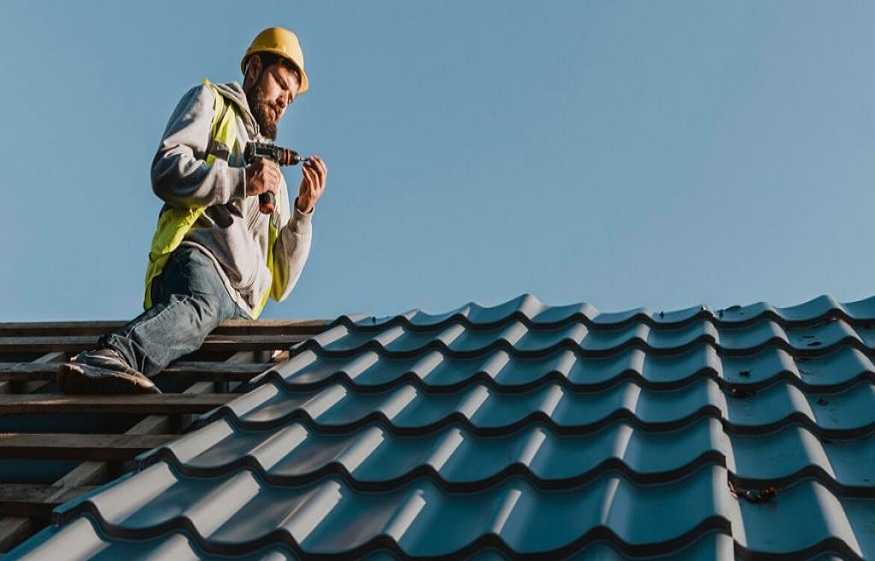1.Diagnosis and Planning
Before any intervention, a complete diagnosis of the roof is essential. This involves identifying existing problems, assessing the condition of the framework and roofing, and determining the work to be carried out. Depending on the age and condition of the roof, asbestos, wood-eating and thermal diagnoses may be necessary.
Asbestos diagnosis: Mandatory for houses built before 1997, it allows the presence of asbestos in the roof to be detected. A certified professional must carry out this diagnosis.
Wood-boring diagnosis: It allows the detection of the presence of insects that can damage the wooden frame. A certified expert must carry out this diagnosis.
Thermal diagnosis: It allows you to evaluate the energy performance of the roof and determine whether additional insulation is necessary. A professional specialized in energy diagnostics can carry out this diagnosis.
Do not hesitate to ask for several quotes from certified professionals to compare their offers and choose the best value for money.
Once the diagnosis has been carried out, plan the work by defining its scope, choosing the materials and craftsmen, and setting a budget. Don’t forget to check with your local town hall about local regulations and planning permissions.
2. Removal of existing cover
The roof covering is usually removed by hand, taking care not to damage the frame. Several techniques exist:
Manual removal: The roofing elements (tiles, slates, etc.) are removed one by one. This is a meticulous method that takes time.
Mechanical removal: A specific tool allows the roof to be removed more quickly. This method requires precision to avoid damaging the frame. It is important to use suitable tools and follow safety instructions.
For manual removal : Use a crowbar and hammer to loosen the tiles or slates. Use nail pullers to remove the nails. Work carefully to avoid breaking the roofing elements .
For mechanical removal : Use a tile stripper to quickly remove the roofing elements.
3. Renovation of the frame
After removing the roof, the condition of the roof frame should be carefully checked for signs of rot, cracks, insects or fungi.
Assemblies: Check that the assemblies are solid and that there are no signs of loosening.
Supporting Elements: Check that rafters, bracing and joists are in good condition.
Traditional framework : It is built with solid wood beams assembled by traditional joints (mortises and tenons, etc.). It guarantees great resistance and integrates well with old buildings .
Industrial framework : It is built with prefabricated elements made of wood or metal. More economical and quick to implement, it is often used for contemporary constructions .
If you are considering loft conversion work , it is important to check that the roof structure is strong enough to support the additional weight. It is advisable to hire a qualified carpenter to carry out any roof structure repairs or replacements.
Read Also: Roof Terrace: Everything you need to know about Roof Terraces
4. Installing the Insulation
Roof insulation is one of the most effective and reliable works to improve the energy performance and thermal comfort of the home. Good roof insulation thus helps reduce heat loss in winter and limit heat gain in summer, which contributes to energy savings and optimal comfort.
Glass wool: Classic and inexpensive, it offers good thermal insulation.
Rock wool: It provides good thermal insulation and is fire resistant.
Expanded polystyrene: Light and easy to install, this insulation guarantees good thermal and sound insulation.
Hemp wool: Natural and ecological, hemp wool offers good thermal insulation and good hygrometric regulation.
Sheep’s wool: This natural and ecological insulator provides good thermal insulation and good noise absorption.
The thickness of the insulation to be used varies depending on the climate and energy performance requirements. It is important to choose an insulation that is suitable for the installation technique and the constraints of the building.
The sarking technique , which consists of laying insulation on the frame under the roof, is an effective solution for improving insulation without losing space in the attic.
According to ADEME (the French Environment and Energy Management Agency), good roof insulation can reduce energy consumption by 30%.
5. Laying the New Cover
Installation of a new roof covering
Laying the roof is a step that requires the intervention of an experienced roofer . It is important to comply with the standards in force to guarantee good waterproofing and the safety of the roof.
Regarding the choice of roofing material, it will depend on the budget, the visual aspect and the local climate.

